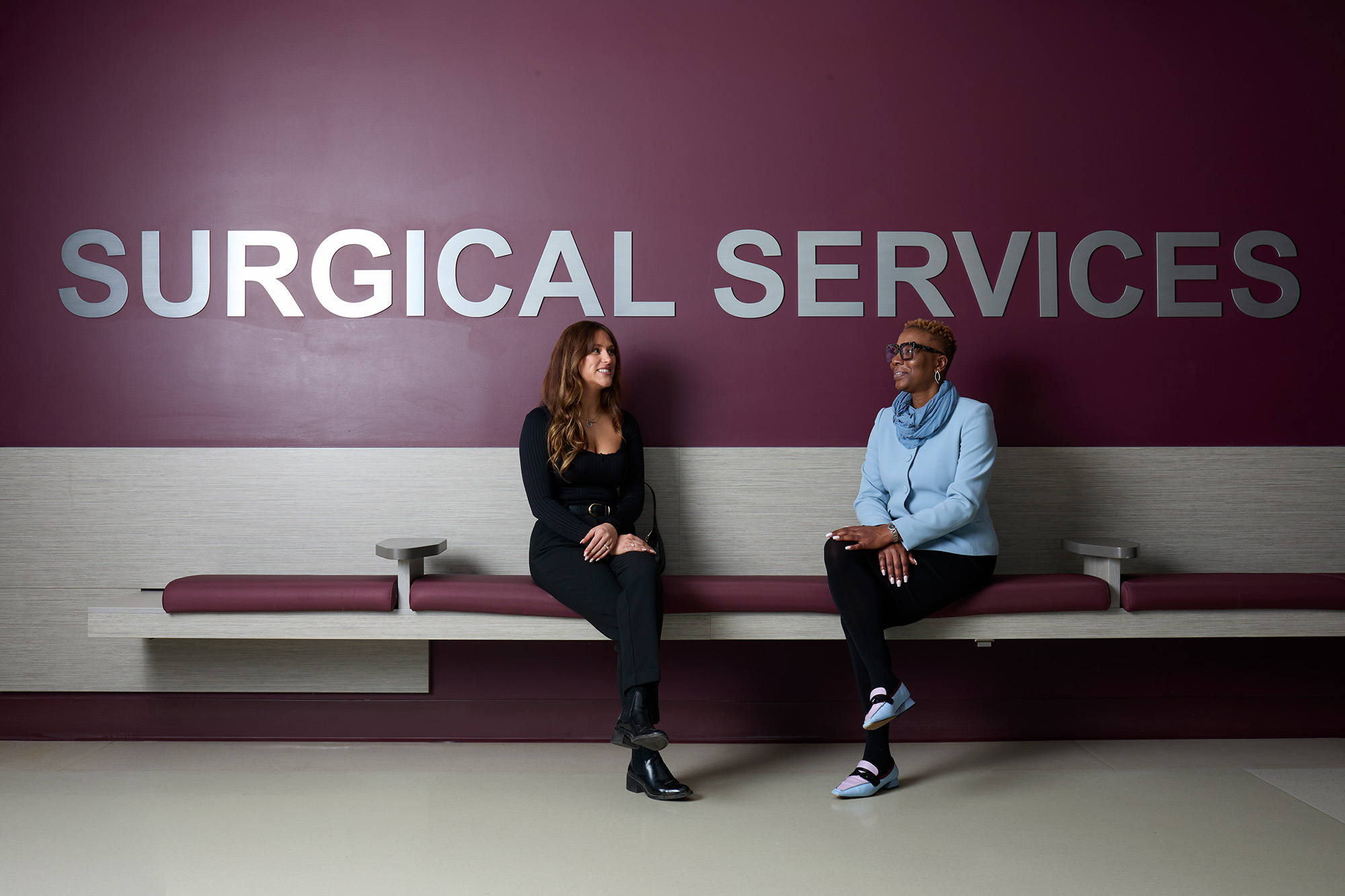Photo caption: Dr. Jonathon Solnik in the operating room with team.
By: Kabir Shergill, Communications Advisor, Women’s College Hospital
For 15 years, Flora Kestin went without answers. She struggled with constant pelvic pain and extreme fatigue. At least three weeks every month, her symptoms were so severe that everyday activities as a busy parent became impossible, also causing her to leave work.
"I felt like a burden to my family, unable to get out of bed,” Kestin recalls, reflecting on the years of uncertainty before she finally found answers. “I knew I needed help, but nothing brought relief.”
Kestin was finally referred to a new obstetrician gynecologist who diagnosed her with endometriosis – a painful condition characterized by the growth of tissue similar to the uterine lining outside the uterus. But her doctor warned that surgical backlogs meant she likely wouldn’t have access to the procedure that could alleviate her pain for at least 12 to 18 months. Already, Kestin had spent over a decade without a diagnosis and three years waiting to see a specialist.
“We have been seeing a sharp rise in people on the waiting list for a long time,” describes Dr. Jonathon Solnik, who is the site head of Gynecology at both Women's College Hospital and Mount Sinai Hospital. “Many of these patients have surpassed the clinical access target for surgery because of staffing and operating room capacity.”
Unfortunately, Flora’s experience is all too common. Surgical backlogs for many non-cancerous surgeries in Ontario are still experiencing the after-effects of pandemic restrictions. A post-pandemic focus on other priority programs, such as total joints, cataract and pediatric surgery, has only exacerbated the issue for some, including those needing non-cancerous gynecological surgery.
In 2024, a collaborative initiative that has included five Toronto-area hospitals – Women’s College Hospital (WCH), Sunnybrook Health Sciences Centre, Mount Sinai Hospital, Scarborough Health Network and Humber River Health – successfully launched the first phase of a project aimed at tackling the backlog for these surgeries in the Toronto region.
“Being an ambulatory hospital, Women’s College was well-positioned to lead this initiative, which capitalized on our existing operating room space and clinical capacity,” explains Sandra Robinson, director of Perioperative Services at WCH and a program lead for the initiative. “Surgeons from collaborating hospitals leveraged after hours operating room time at Women’s College to perform non-cancerous gynecological surgeries for patients waiting a long time, allowing us to collectively address and begin to overcome the health system’s surgical backlog.”
 Photo caption: (Left to right) Patient Flora Kestin and WCH's Sandra Robinson.
Photo caption: (Left to right) Patient Flora Kestin and WCH's Sandra Robinson.
Using funding received through the Ontario Ministry of Health’s Surgical and Diagnostic Imaging Efficiency & Innovation Initiative, the program nearly doubled its target by completing 515 non-cancerous gynecological surgeries within just four months. At the time, this represented approximately 36 per cent of patients classified as waiting too long for non-cancerous gynecological procedures. This year, the partnership is hoping to complete another 450 cases, representing an incredible 41 per cent of the current long waiter list.
Dr. Jamie Kroft, an obstetrician gynecologist practicing out of Sunnybrook has seen firsthand the frustration of patients waiting for long periods to see a specialist, compounded further by the fact that many are in considerable pain.
“This partnership has made strides in improving how quickly we treat patients in need of gynecology procedures,” says Dr. Kroft. “With strong support from the government, hospitals have been able to work together to address waitlists now, and hopefully in the future, in a sustainable way.”
Phase two of the program hopes to see the establishment of a centralized intake model for non-cancerous gynecological cases, streamlining patient referrals and enhancing access to care across the Toronto region. This approach will align appointments with the next available surgeon and provide options for primary care physicians to select preferred providers. By establishing a centralized intake model, the program will enhance patients’ access to care while allowing them to stay closer to home.
“We’ve been able to take a strategic approach to tackling healthcare challenges through joint solutions,” says Robinson. “Through targeted investments and cooperative efforts, this program exemplifies a commitment to driving innovation in surgical care delivery. We are creating a foundation that confronts surgical wait times and builds a new healthcare model for the future, rooted in collaboration.”
For Flora Kestin, the initiative has made a world of difference.
In February 2024, Dr. Kroft performed a complex five-hour surgery using operating room space at WCH to carefully remove Kestin’s uterus, cervix, left ovary and fallopian tubes – and, as a result, removing the endometriosis completely from Kestin’s body.
Within days, Kestin felt a sense of relief she hadn't known in years. “I haven’t had any pain, and my mobility has really improved,” she said. “And it goes past that. I feel much more calm, like my nervous system is more relaxed.”
Since the surgery, Kestin is filled with more energy to engage with her two young sons and, for the first time in years, she is hopeful about returning to work. The surgery didn’t just end her physical suffering – it gave her back her life.